Could 220VAC Silicon bed heater be dangerous?
-
Good morning, I'm starting to think to add a 220VAC silicon heater for my 330x330 bed but I have some worries...of course working with the 220VAC a lot of cautions are mandatory (insulations and so) and to use an SSR to drive it is a must, but those things are not a problem....what worries me more is the doubt about what could happen if the thermistor should fail....what could be the behavoir of the board in that case? My main worry is that having no more temperature reading the board could let the heater powered on with the result of....well, you can imagine....I know that exist thermal fuse to add (attached below the bed an electrically in series with the main supply I suppose) so I was wondering if they have to be used or not...any suggestion?
Thanks
-
with a 220 ac heater defiantly add the thermal fuse.
if the heater detaches from the bed because the glue fails it would be a fire risk.
-
I think firmwares handle this case, nowdays, but I would also add an additional hard-based safety.
-
@Veti said in Could 220VAC Silicon bed heater be dangerous?:
with a 220 ac heater defiantly add the thermal fuse.
if the heater detaches from the bed because the glue fails it would be a fire risk.
as I supposed...have the thermal fuse to be attached with glue or something else below the heater and in series with the heater's power supply line?
-
@the_dragonlord yes.
I went for extra safety and have one on both live and neutral.
Don't forget to wire the aluminum plate to ground -
@jay_s_uk said in Could 220VAC Silicon bed heater be dangerous?:
@the_dragonlord yes.
I went for extra safety and have one on both live and neutral.
Don't forget to wire the aluminum plate to groundBut how and where have you atteched them to the heater?
-
@the_dragonlord to the silicone heater itself with silicone (high temp stuff)
-
Other people have covered it but...
220VAC is not the issue, all of Europe uses that voltage without everyone suddenly bursting into flames

But I'm guessing that your heater is not just a couple of hundred watts.The rule of thumb is, either design your heated bed to be able to withstand the max temp it will reach if just set to 100% for an indefinite period of time.
Or add a fail-safe device like a thermal fuse.
And make sure the fuse is either inside the heater (if you can get it made that way) or mounted somewhere that its going to be the first thing that overheats.Grounding the bed is excessive, a silicone heater should be double insulated, if its shorted to the bed its because you have drilled through the bed, or some other nonsense.
-
@theruttmeister You're right, I think that grounding the alluminum plate is unuseful too....the silicon beds that you can find online have almost all the power of 750W wich is, in my opinion, a "lot" of power in terms of maximum reachable temperature....my alluminum bed is 3mm thick...
-
My heated bed is 2000w and 10mm thick
-
@the_dragonlord All good advice given above. I'll just add that if you resist the urge to fit a heater that is too powerful, then you'll avoid the possibility of the bed getting so hot that it will cause a fire. I elected to use 12mm of semi rigid insulation under mine which helps with the warm up time whilst using modest heater power.
As well as earthing everything (the plate and the frame in several places) I use an RCD which will help to minimise the risk of electrocution should the worse happen. -
@the_dragonlord said in Could 220VAC Silicon bed heater be dangerous?:
grounding the alluminum plate is unuseful
Hoping for your health and safety that that is a typo....
Here are some inspirations.....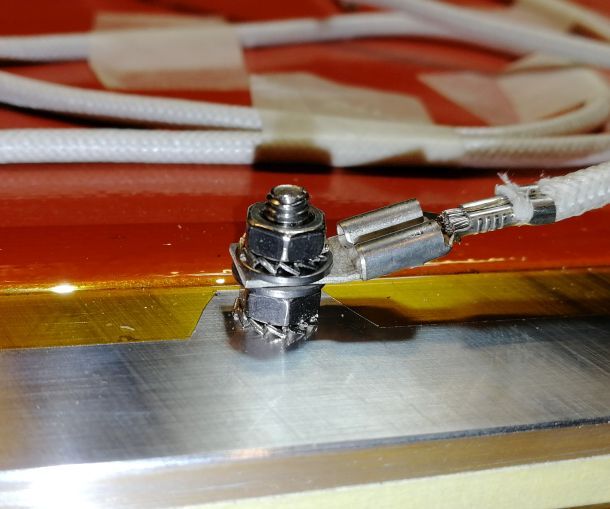
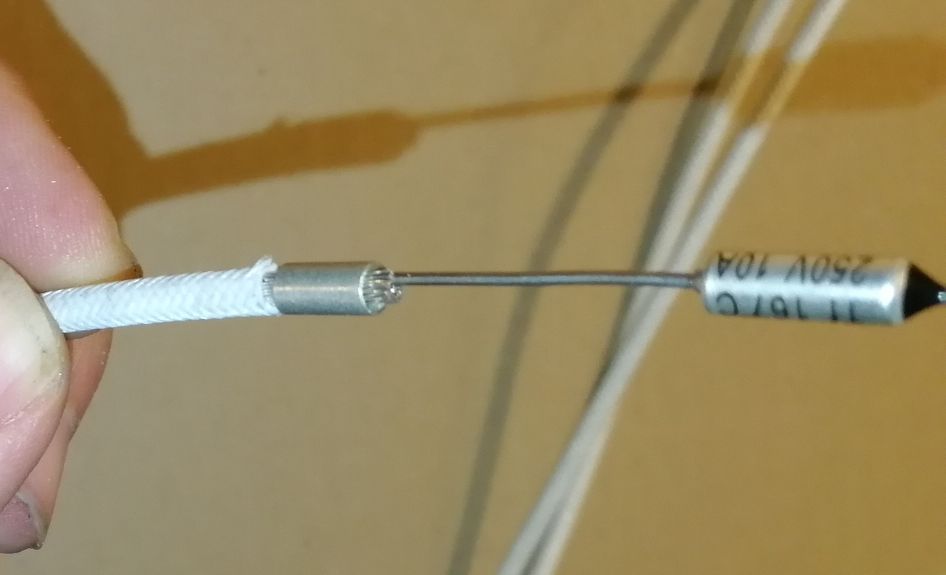
That is the uncrimped view !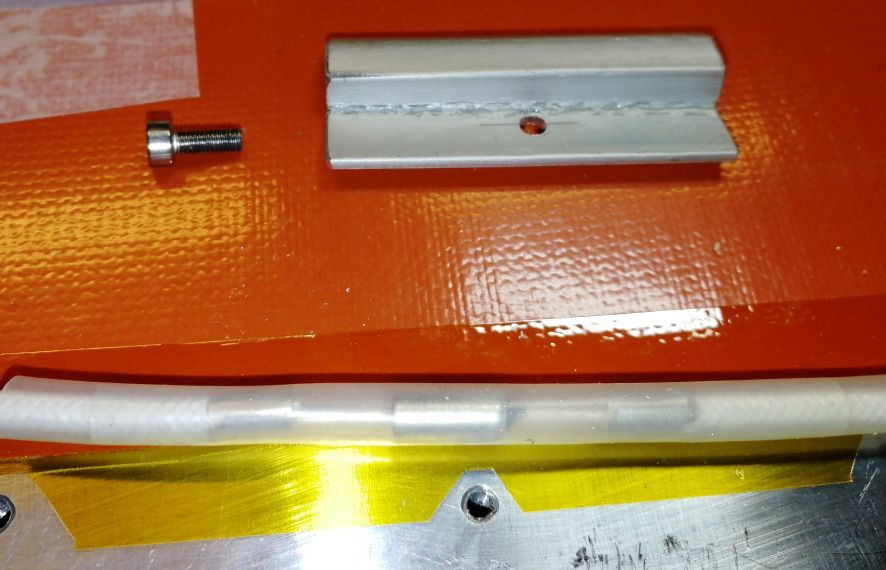
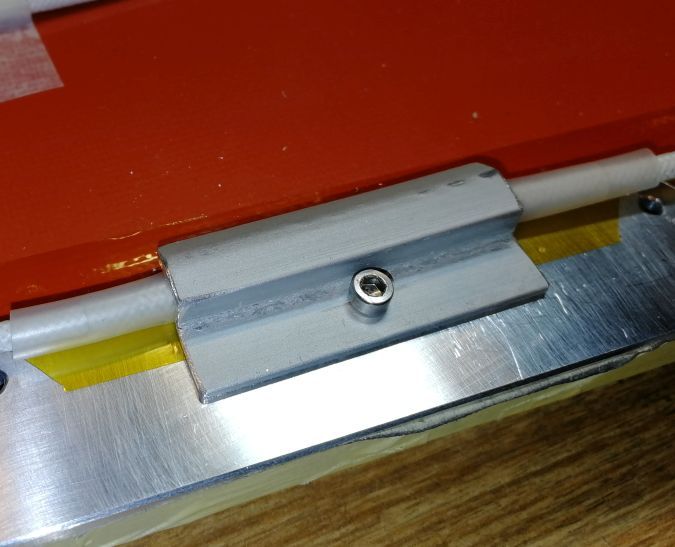
-
There are devices intended for bolt mounting, e.g. https://www.digikey.com/catalog/en/partgroup/b12-series/6415
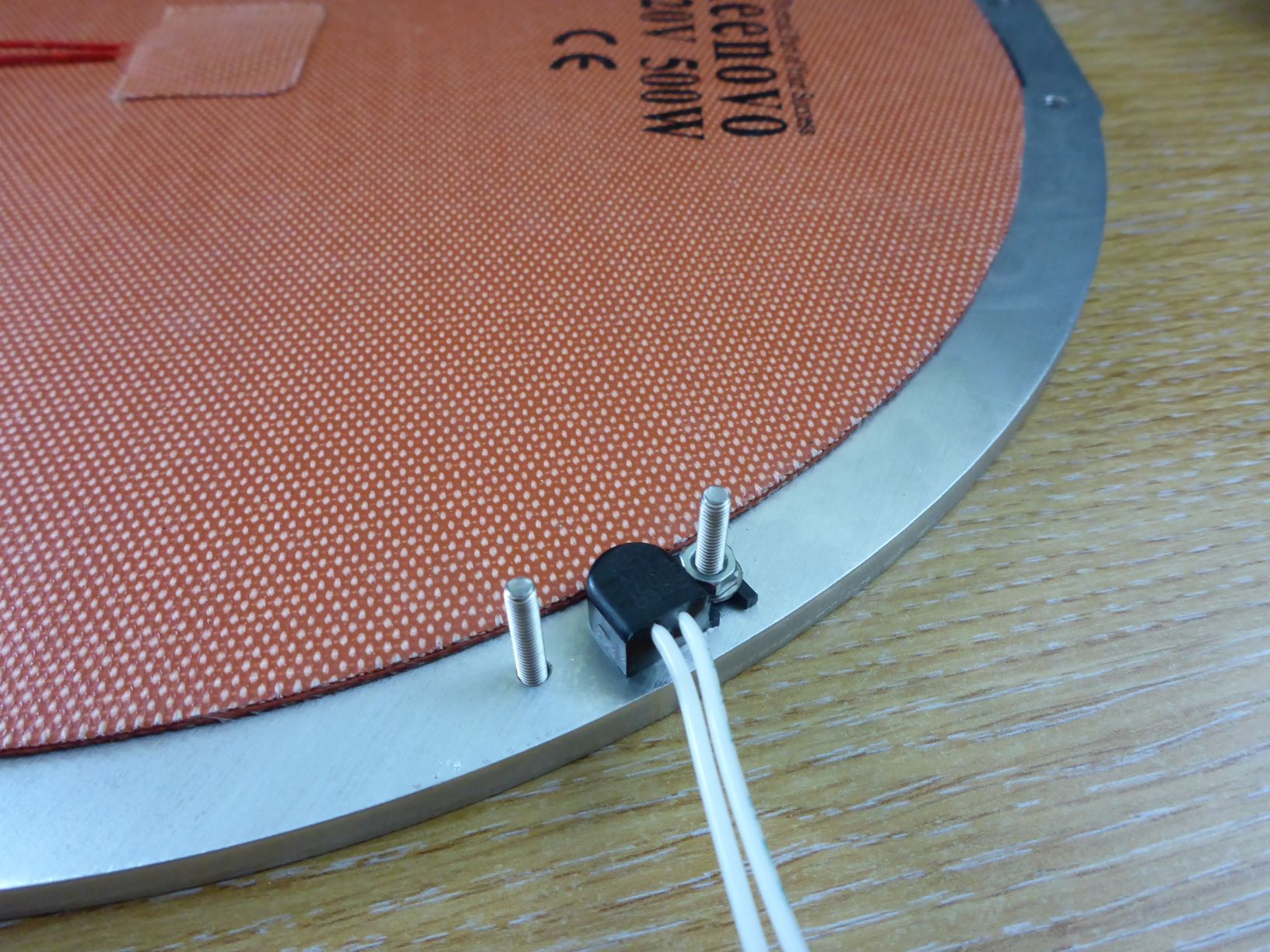
-
@the_dragonlord if the thermistor fails open, the controller will report a high temperature (2000C) and will shut off the heater. If it fails shorted it may detect that condition (does it?) and shut off the heater, too. All that assumes the controller is working properly. You should still use a TCO for protection against the controller going insane or SSR failure.
@achrn If the adhesive holding the heater on the plate fails, the heater will instantly get extremely hot and burn. If the TCO is bolted to the plate and the heater is hanging by its wires, it won't prevent a fire. It's much better to mount the TCO on the heater (if its glued to the plate) so that the TCO stays with the heater if it comes off the plate. If the heater is mechanically fixed to the plate you can mount the TCO on the plate.
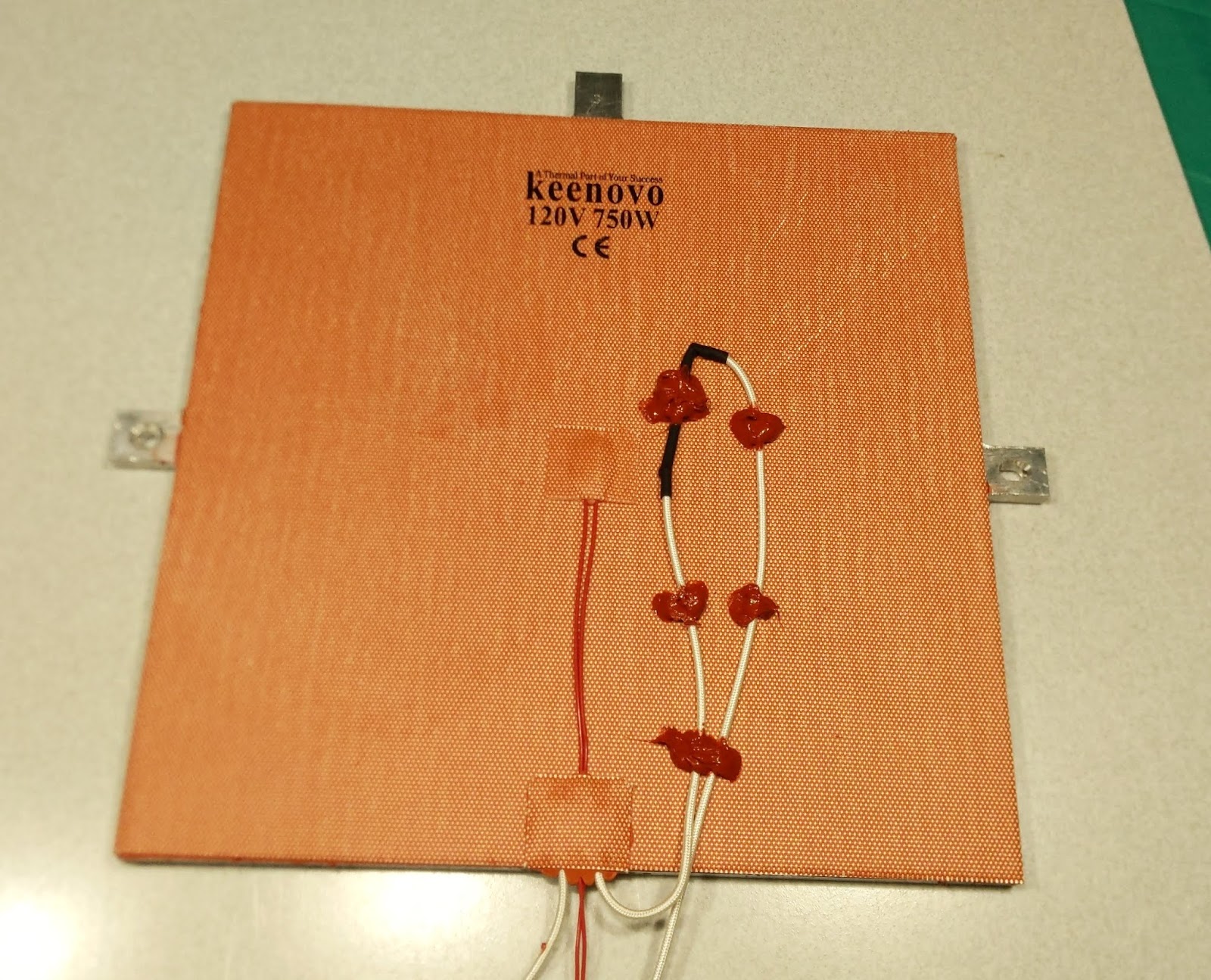
The 468MP adhesive that come on some Keenovo heaters is only good for a couple years if you don't seal the edges with silicone, per Keenovo's manual, when you mount the heater. I don't know if sealing the edges per the manual extends the life of the adhesive. As the adhesive lets go, it will create air gaps between the heater and the plate that will get very hot (the plate is a heatsink for the heater).
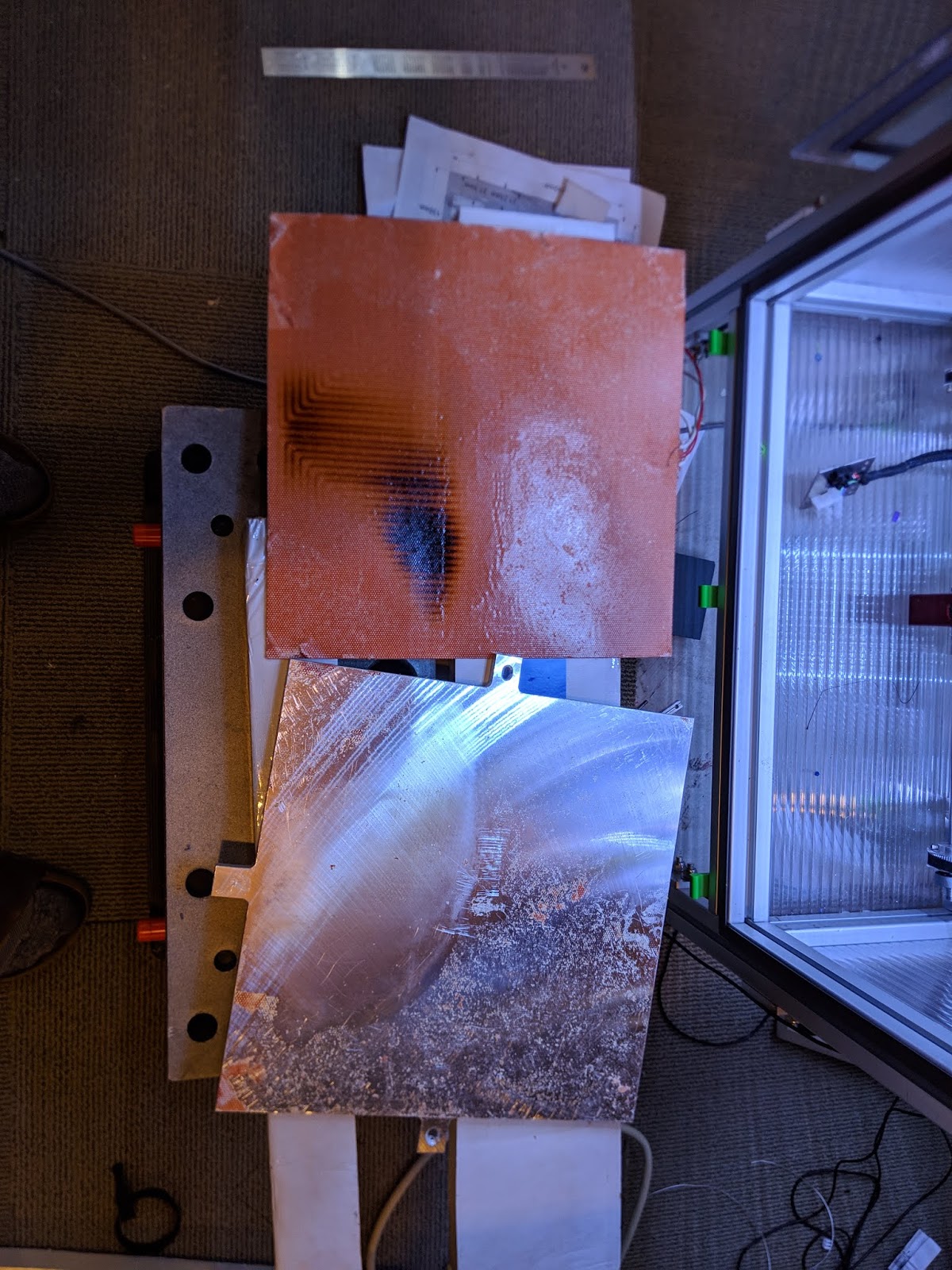
It is better to order a heater that has no adhesive and glue it to the plate using high temperature silicone.
TCOs, fuses, and switches go on the live side of the line, not the neutral side. Opening up the neutral side gives the false impression that everything is safe but you still have line voltage applied to the circuit. That can be dangerous for anyone trying to troubleshoot or repair the machine.
Don't get cheap when buying the TCO. Fully spec'd and safety certified TCOs cost about $1 at DigiKey and other parts suppliers. This is not something to buy from the cheapest vendor on ebay or ali-express.
-
Keenovo also recommends a backing structure that applies pressure to keep the heater and heatsink in close contact. I did that using some ceramic mat normally used for repacking moped/motorcycle mufflers.
-
@DaBit Thanks for all of your answers....you made me change my mind...I'll keep my 24VDC bed...too many risks for me and they're not worth it....thanks guys
-
Your call.
I hugely prefer the lower overall energy consumption (230V->24V conversion is not 100% efficient after all), more reasonable wiring cross-section and faster heatup of a 230VAC powered bed heater.
A 24VDC heater also burns to ashes when it separates from the build plate, and grounding the build plate (and other metal parts) is always a good idea, also in a 24VDC environment.
-
@the_dragonlord said in Could 220VAC Silicon bed heater be dangerous?:
@DaBit Thanks for all of your answers....you made me change my mind...I'll keep my 24VDC bed...too many risks for me and they're not worth it....thanks guys
It's not the voltage that makes for the risks - it's the power - and the heat that it generates.
If two heaters had the same wattage rating, one low voltage the other line voltage, they both would present the same risk in regards to over heating.
Frederick
-
@mrehorstdmd said in Could 220VAC Silicon bed heater be dangerous?:
@achrn If the adhesive holding the heater on the plate fails, the heater will instantly get extremely hot and burn. If the TCO is bolted to the plate and the heater is hanging by its wires, it won't prevent a fire. It's much better to mount the TCO on the heater (if its glued to the plate) so that the TCO stays with the heater if it comes off the plate. If the heater is mechanically fixed to the plate you can mount the TCO on the plate.
My heater is fixed mechanically - six bolts or a 2mm backing aluminum plate would need to fail for the heater to detach from the plate. I followed Keenovo's recommended arrangement (heated plate - heater - insulation - structural backing plate), except that my insulation is reconstituted cork rather than their recomendation of a foam.